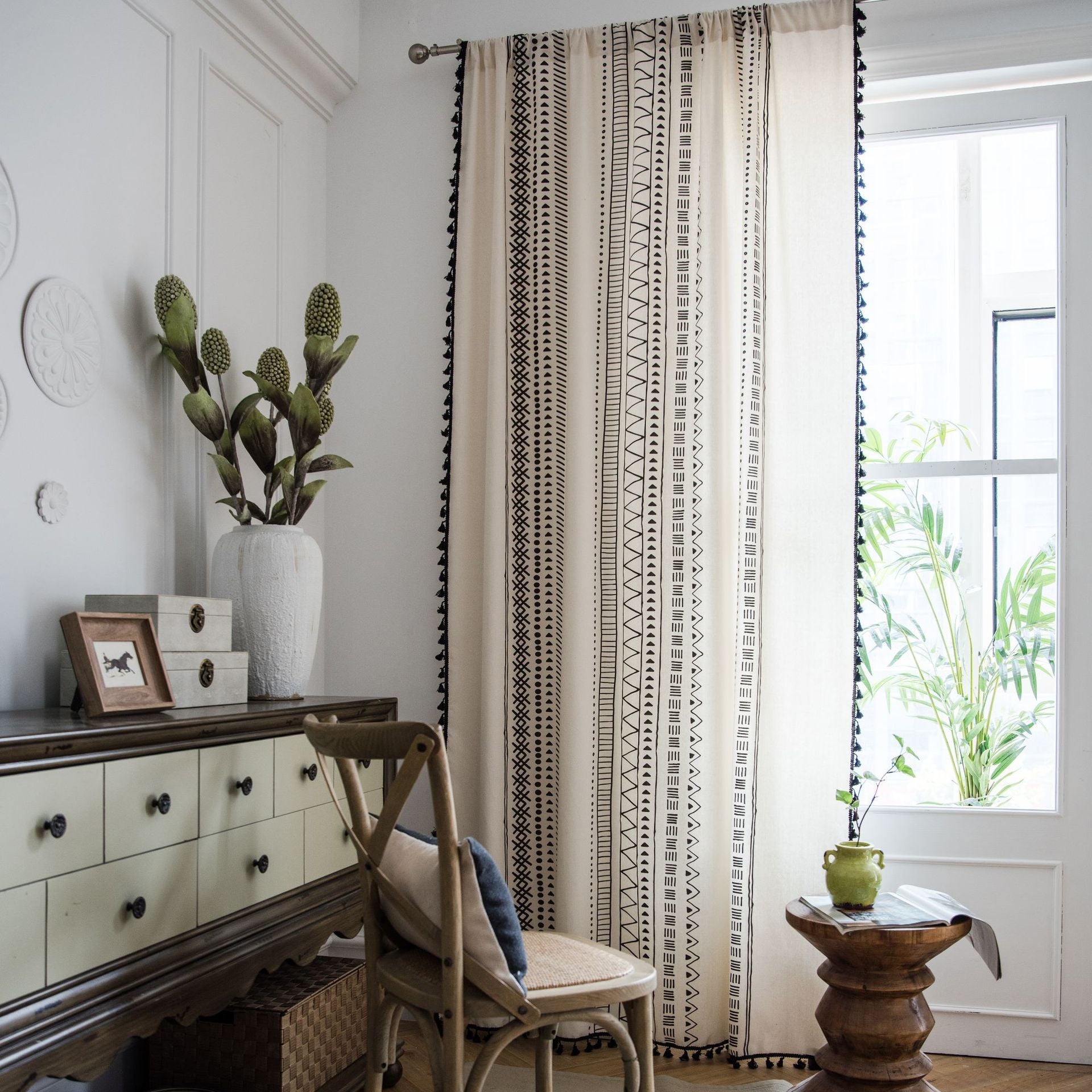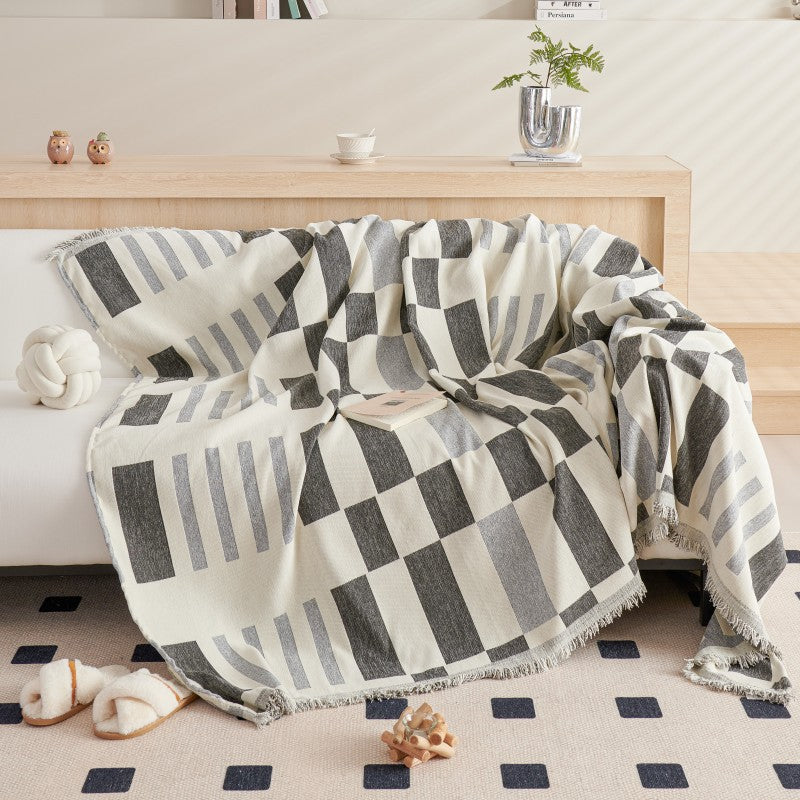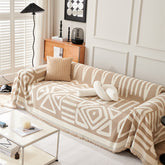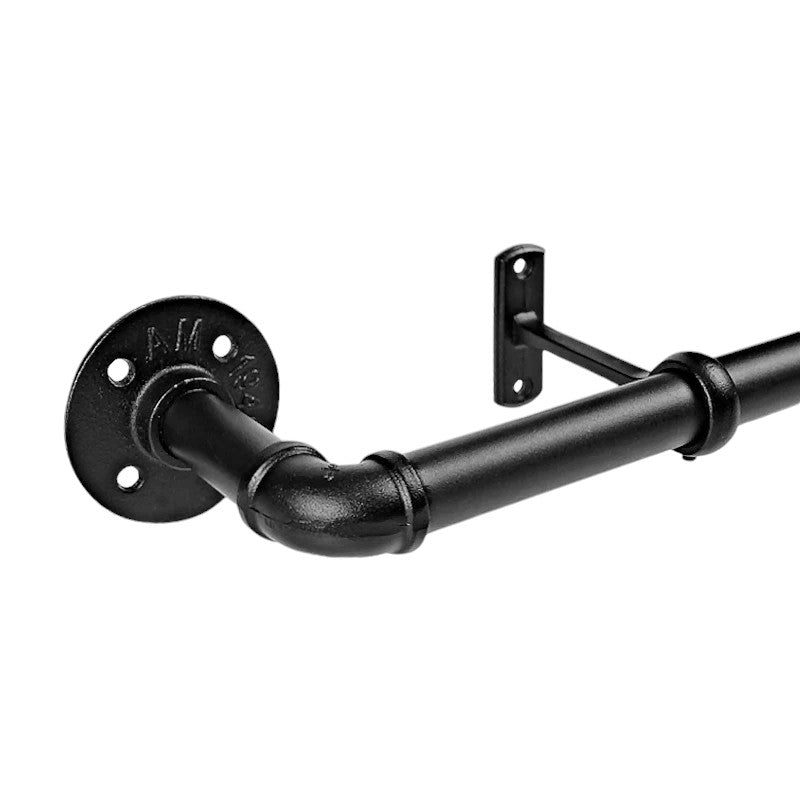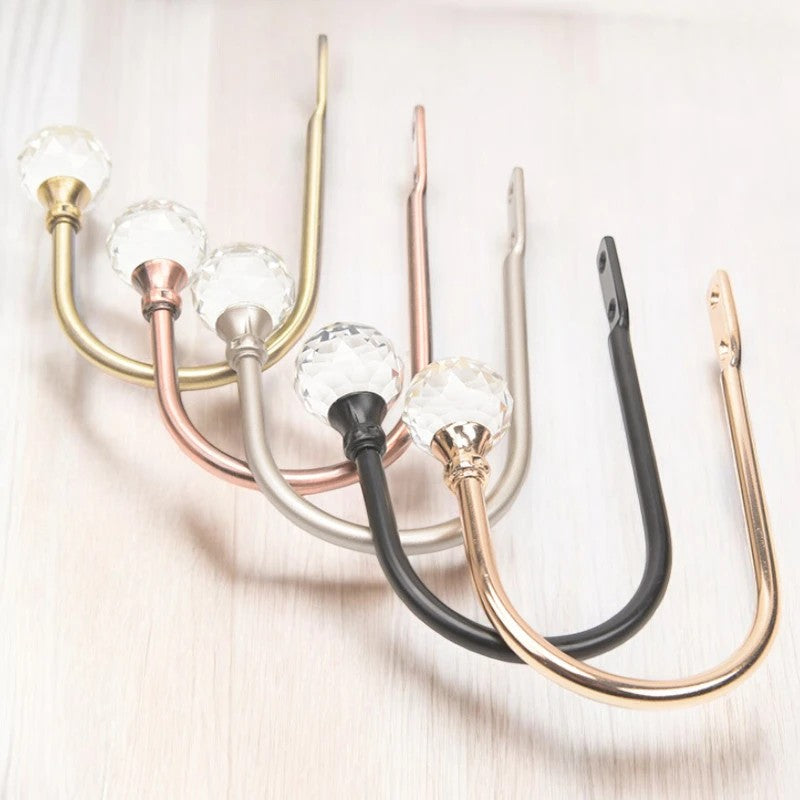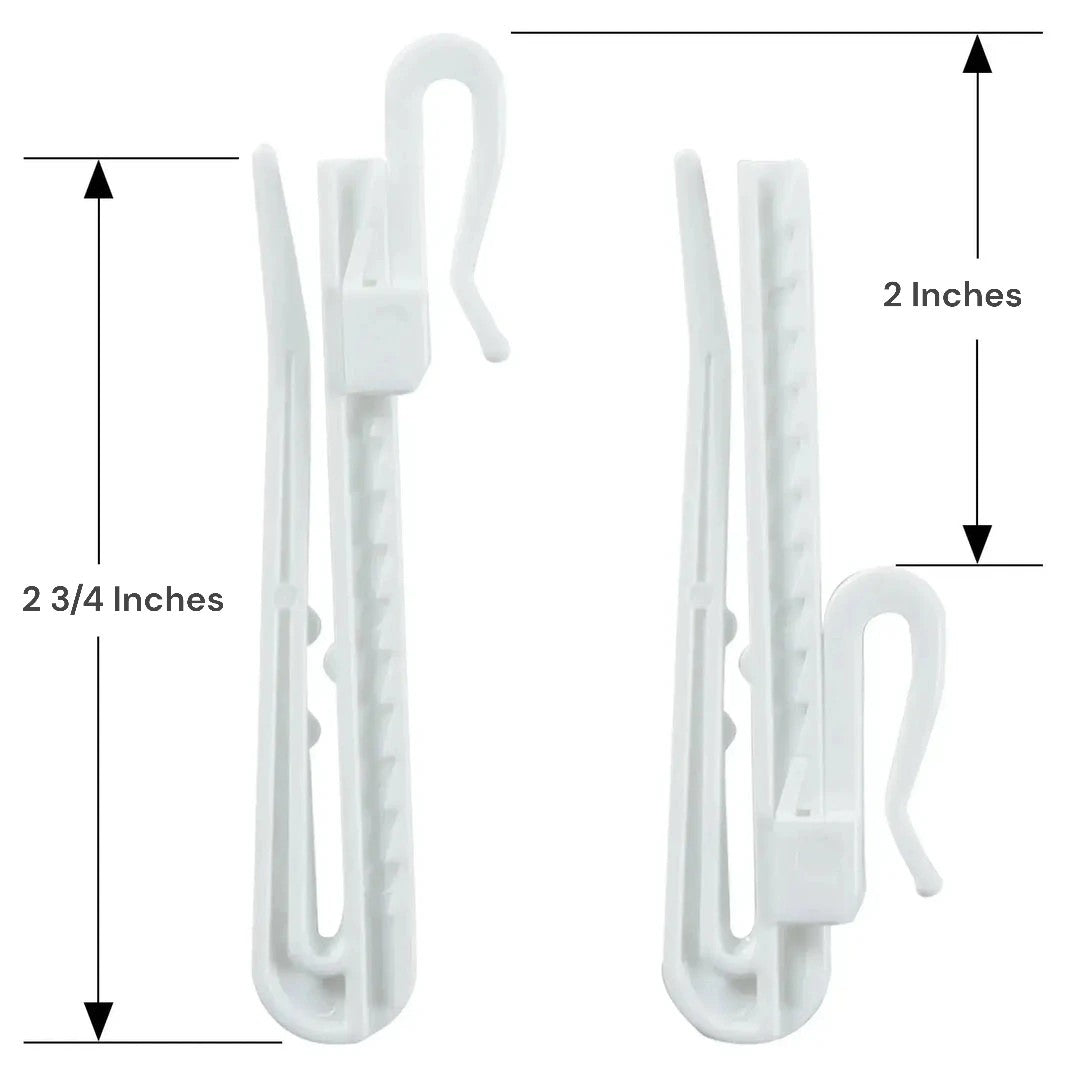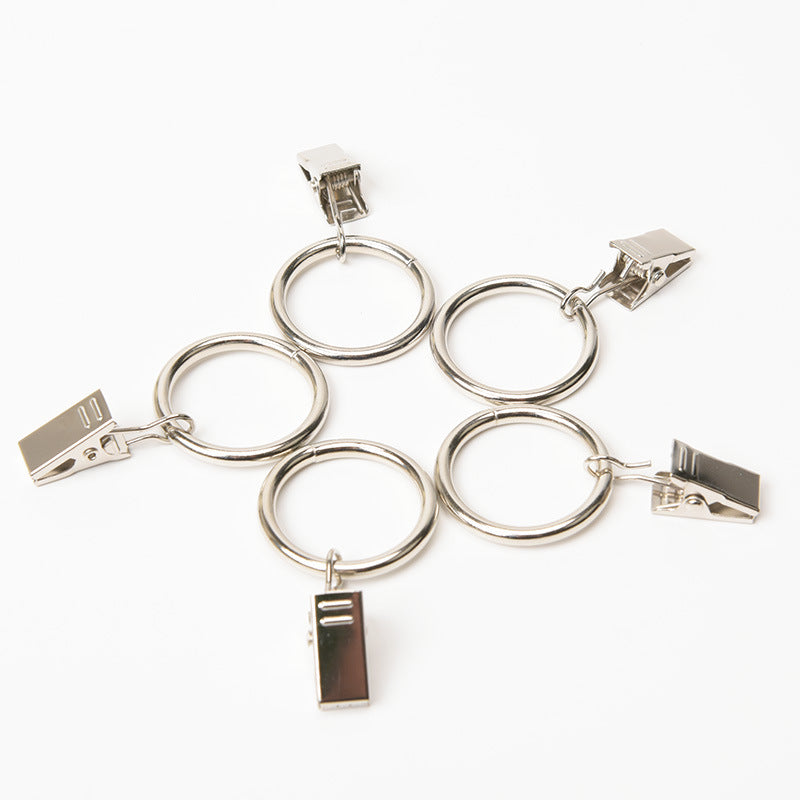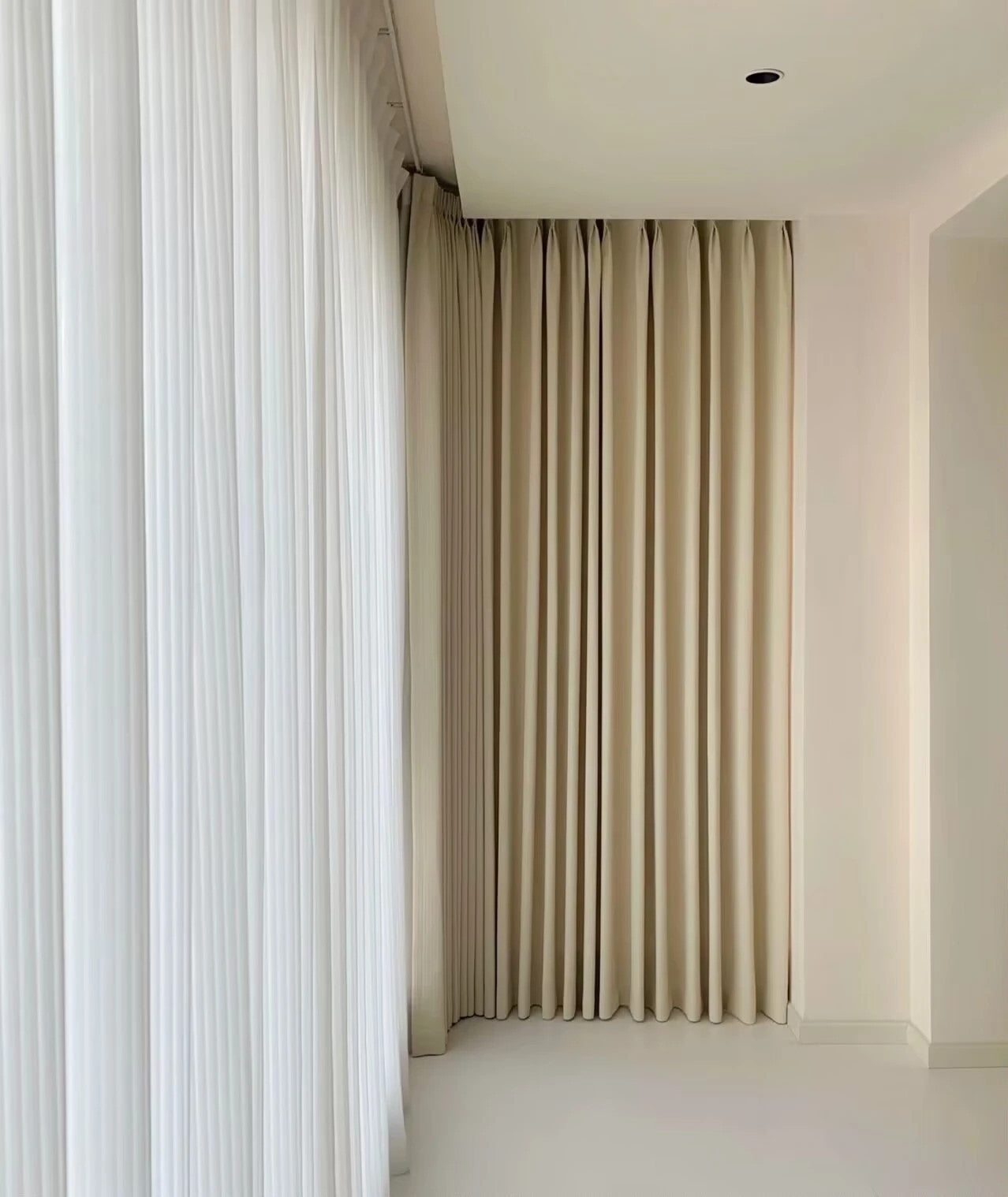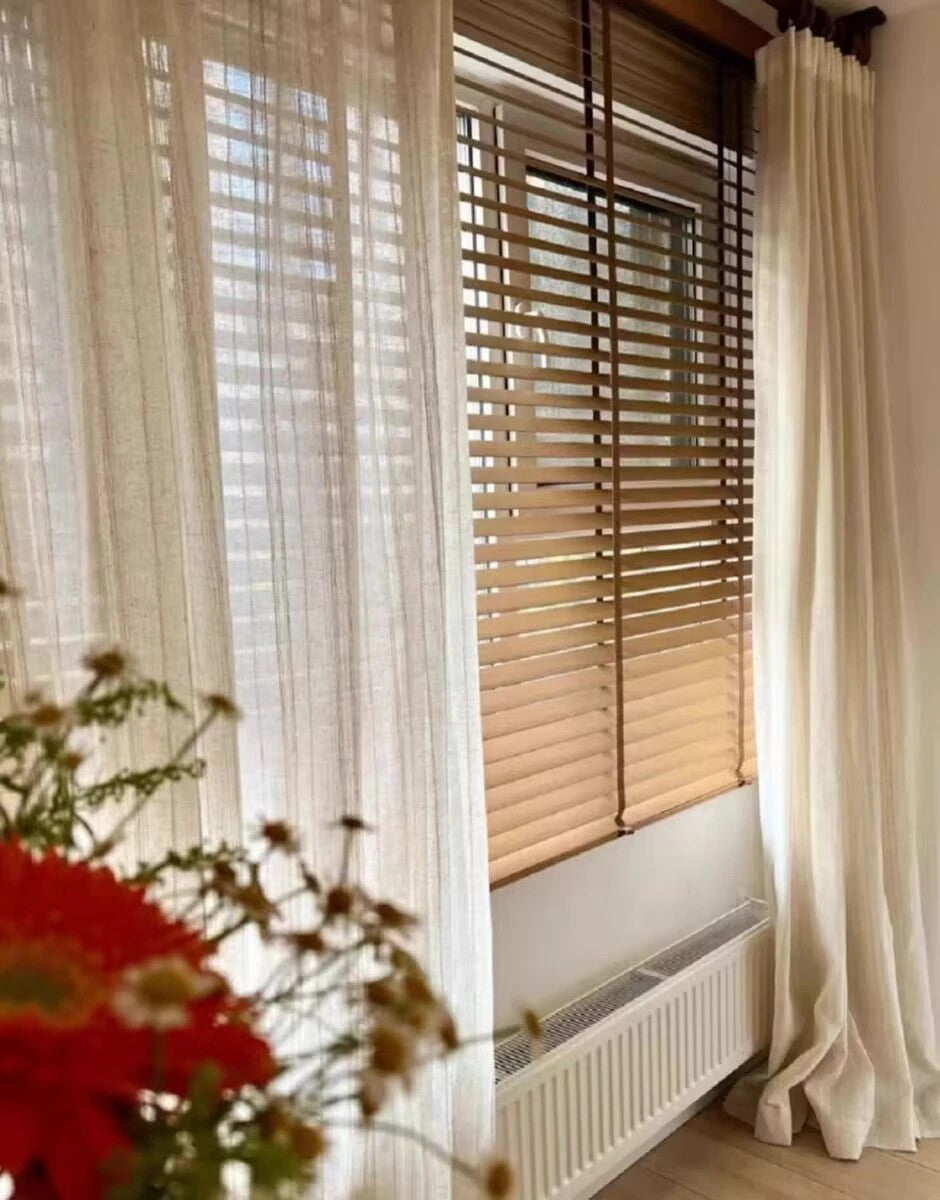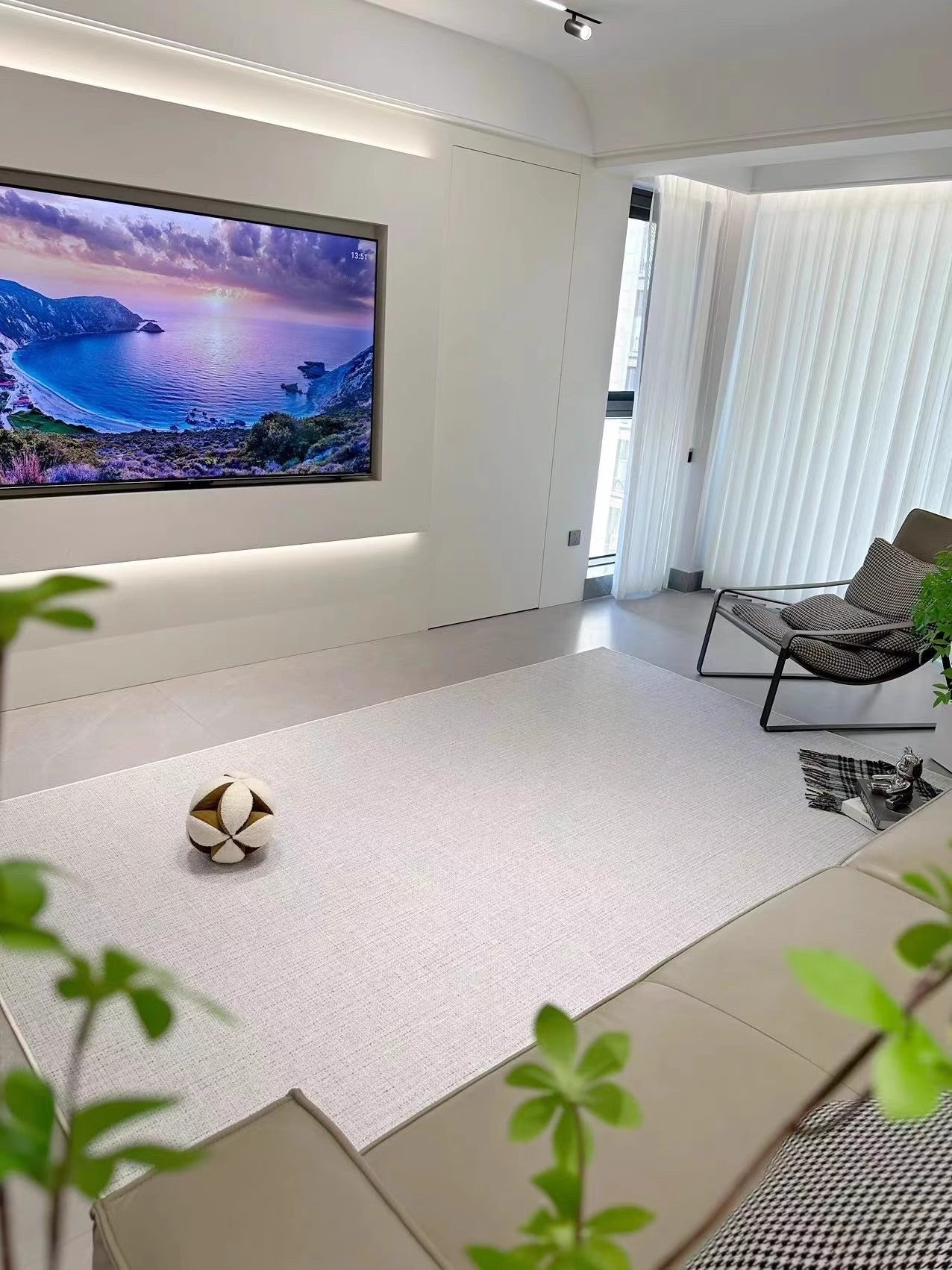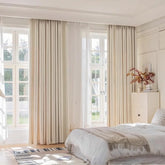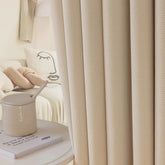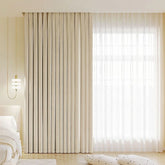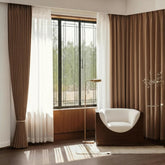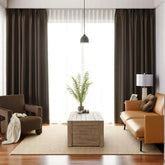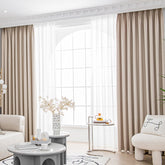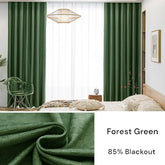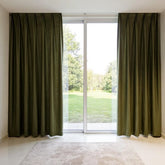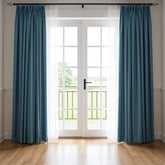Choosing the Right Curtains for Different Climates Guide
Are you struggling to find the perfect curtains for your home, considering the varying climates across the United States? We understand that choosing curtains that are suitable for different weather conditions can be a challenging task. But worry not, as we are here to help you make the right decision.
Selecting the right curtains for different climates involves thoughtful consideration of various factors. By taking into account the room's purpose, window size, light exposure, fabric type, and desired style, you can find curtains that not only enhance the look of your home but also provide the desired level of comfort in any climate.
Key Takeaways:
- Select curtains based on the purpose of the room and the desired level of warmth and cosiness.
- Consider the fabric type that can withstand the climate, such as synthetic fibers or blends.
- Choose the appropriate curtain length to achieve the desired look and functionality.
- Explore different curtain heading styles and choose one that complements your room's decor.
- Pay attention to colors and patterns to ensure they harmonize with the overall aesthetic.
Curtains for Hot Climates
When it's scorching outside, it's crucial to have curtains that can effectively block heat and keep your home cool. Heat-blocking curtains are a popular choice for hot climates, as they are designed to reflect sunlight and prevent heat from entering your space. These curtains are typically made with special thermal lining that helps insulate your windows, keeping the temperature inside comfortable.
Another option for hot climates is cooling curtains. These curtains are made from lightweight or sheer fabrics that allow air to circulate freely while still providing privacy. They create a summery feel and can help create a more relaxed atmosphere in your home. If you prefer a bit of natural light, sheer curtains can filter sunlight while still maintaining a level of privacy.
When choosing curtains for hot climates, it's important to consider the fabric type. Fabrics like cotton, linen, and polyester are popular choices as they are lightweight and breathable.
Synthetic fibers or blends are also a good option, as they are more resistant to fading and can withstand the harsh sun. To ensure the curtains effectively block heat, look for curtains with a high thermal resistance rating.
Overall, selecting the right curtains for hot climates involves considering the purpose of the room, the amount of light the room gets, the fabric type, and the desired style and functionality. Investing in heat-blocking or cooling curtains can make a significant difference in maintaining a comfortable indoor temperature during hot weather.
| Feature | Heat-Blocking Curtains | Cooling Curtains |
|---|---|---|
| Function | Reflect sunlight, insulate windows | Allow air circulation, provide privacy |
| Fabric Type | Thermal-lined, heavy fabrics | Lightweight or sheer fabrics |
| Recommended Room | Living rooms, bedrooms | All rooms, especially those with ample sunlight |
| Style | Elegant and formal | Airy and casual |
Curtains for Cold Climates
As the cold weather approaches, it's essential to choose curtains that provide insulation and keep the warmth inside your home. In colder climates, a thick, lined fabric curtain is recommended to help insulate the room during the winter months. Thermal curtains, also known as insulated curtains or winter curtains, are specifically designed to trap heat and prevent cold air from seeping into your living space.
When selecting curtains for cold climates, the type of fabric plays a crucial role. Fabrics like velvet, acrylic, and polyester offer excellent insulation properties.
Velvet curtains provide both glamour and richness while effectively keeping the cold air at bay. Acrylic curtains are lightweight and yet provide great insulation, making them ideal for colder regions. Polyester curtains, on the other hand, are durable, easy to care for, and can protect your room from the chilly weather.
Furthermore, the length, style, and heading of the curtains can also affect their insulating capabilities. Longer curtains that touch or pool on the floor provide an additional barrier against cold drafts.
Pencil pleat or single pleat curtain headings are popular choices, as they help create a fuller, more luxurious look while maintaining warmth inside the room. It's essential to choose curtains that are not only functional but also complement the decor of your space.
| Fabric | Insulation Properties |
|---|---|
| Velvet | Provides excellent insulation and adds a touch of luxury. |
| Acrylic | Lightweight fabric that offers great insulation and durability. |
| Polyester | Durable and easy to care for, with good insulating properties. |
When choosing curtains for cold climates, it's important to consider the purpose of the room, the size of the windows, the amount of light the room receives, and your desired style and functionality. By selecting the right curtains, you can create a warm and cozy atmosphere inside your home, even during the coldest of winters.
Curtains for Humid Climates
Living in a humid climate requires curtains that can withstand moisture and effectively resist mold and mildew. Humidity can be detrimental to curtains made from certain materials, causing them to become damp and developing unsightly mold and mildew. To combat this, it's important to choose weather-resistant curtains specifically designed for humid climates.
When selecting curtains for humid climates, opt for fabrics that are moisture-resistant and quick-drying. Synthetic fibers like polyester and nylon are excellent choices as they are naturally resistant to moisture and are less likely to retain water. Additionally, these materials offer durability and are easy to care for, making them ideal for withstanding the challenges posed by high humidity levels.
In addition to the material, consider the type of curtain heading that best suits your needs. Grommet or eyelet headings are popular choices in humid climates as they allow for better air circulation and reduce the chances of moisture getting trapped within the curtain folds. This helps to prevent the growth of mold and mildew, ensuring your curtains stay fresh and clean.
"Living in a humid climate requires curtains that can withstand moisture and effectively resist mold and mildew."

| Preferred Fabrics | Not Recommended Fabrics |
|---|---|
| Polyester | Linen |
| Nylon | Cotton |
| Acrylic | Silk |
Remember to regularly clean and maintain your curtains to prevent the accumulation of moisture and the growth of mold and mildew. Follow the manufacturer's instructions for cleaning and drying to ensure the longevity of your curtains in a humid climate.
Key Points:
- Choose weather-resistant curtains that can withstand high humidity levels.
- Opt for fabrics like polyester and nylon that are moisture-resistant and quick-drying.
- Select curtain headings like grommet or eyelet to promote air circulation and prevent moisture buildup.
- Regularly clean and maintain your curtains to keep them fresh and mold-free.
Curtains for Dry Climates
In dry climates, curtains that provide insulation can ensure a cozy ambiance and prevent excessive heat loss. These climate-specific curtains are designed to keep the room cool during hot summers and retain warmth during cooler months.
When selecting curtains for dry climates, it's important to consider the type of fabric that can withstand the arid conditions. Fabrics such as polyester, linen, or a blend of synthetic fibers are ideal choices. Polyester curtains are known for their durability and ease of care, making them a practical option. Linen curtains, although more challenging to maintain, offer a luxurious aesthetic that complements various room styles.
The Best Fabric Options for Dry Climates
| Fabric Type | Features |
|---|---|
| Polyester | Durable, Easy to Clean |
| Linen | Luxurious, Breathable |
| Blend of Synthetic Fibers | Durable, Resistant to Fading |
Aside from fabric selection, curtain length and heading style also play a role in maintaining a stylish and functional space. Curtains that touch the floor or pool slightly provide an elegant touch to the room while preventing drafts. Popular heading styles like the pencil pleat or single pleat create a neat appearance and can be easily adjusted to control the amount of sunlight entering the room.
When it comes to colors and patterns, it's advisable to choose lighter shades to reflect sunlight and create a brighter atmosphere. Subtle patterns or textures can add visual interest without overwhelming the space. To ensure the curtains complement the room decor, it's helpful to request fabric samples and observe how they filter light and drape before making a final decision.
- Insulated curtains are essential for creating a cozy ambiance and preventing excessive heat loss in dry climates.
- Choose curtains made from polyester, linen, or synthetic fiber blends to withstand the arid conditions and ensure durability.
- Consider longer curtain lengths and elegant heading styles for a stylish touch while preventing drafts.
- Opt for lighter shades and subtle patterns to reflect sunlight and enhance the brightness of the space.
Curtains for Coastal Climates
Living near the coast means dealing with salt, sand, and sea spray, which makes it crucial to select curtains that are weatherproof and durable. Coastal climates pose unique challenges to curtain longevity, as the constant exposure to saltwater and high humidity can cause damage over time. Choosing weatherproof curtains can help protect against these elements and ensure your curtains last longer.
When selecting curtains for coastal climates, consider materials that are resistant to moisture and can withstand the harsh coastal environment. Synthetic fabrics like polyester and acrylic are excellent choices as they are durable and resistant to mold and mildew. These fabrics also dry quickly and are less likely to fade or deteriorate due to saltwater exposure.
In addition to weatherproof qualities, it's important to choose curtains that complement the coastal aesthetic.
Light and airy fabrics such as gauze or sheer curtains can create a beachy atmosphere by allowing natural light to filter through while offering some privacy. Opt for colors that reflect the coastal surroundings, such as soft blues, greens, or sandy neutrals. These hues can evoke a sense of tranquility and mimic the picturesque seaside scenery.
| Advantages of Weatherproof Curtains for Coastal Climates | Disadvantages of Non-Weatherproof Curtains |
|---|---|
|
|
By investing in weatherproof curtains designed for coastal climates, you can enjoy the coastal lifestyle without sacrificing the longevity and aesthetics of your curtains. These curtains will not only withstand the coastal elements but also enhance the overall look and feel of your coastal-inspired space.
Comparison of Fabric Types for Different Climates
| Fabric Type | Climate Suitability | Qualities |
|---|---|---|
| Cotton | Versatile | Crisp, clean feel |
| Linen | Difficult to manage and degrades quickly | Natural look, breathable |
| Polyester | Durable, easy to care for | Wide range of colors, wrinkle-resistant |
| Velvet | Glamour and richness | Thick, insulated fabric |
| Acrylic | Lightweight, provides great insulation | Soft and warm |
| Gauze | Crisp, provides privacy | Sheer fabric, allows light to filter through |
Tips for Selecting the Perfect Curtains
To make the best choice for your home, consider these tips when selecting curtains that are suitable for diverse climates and energy-efficient.
1. Choose the Right Fabric: The type of fabric you choose for your curtains can significantly impact their performance in different climates. For energy efficiency, consider insulated curtains made from thick materials like velvet or thermal fabrics. These curtains help retain heat in colder climates and keep the room cool in hotter climates. In humid areas, opt for lightweight and breathable fabrics like cotton or linen to allow proper airflow.
2. Consider Curtain Length and Style: The length of your curtains can also play a role in their functionality.
In colder climates, longer curtains that touch or pool on the floor can help prevent drafts and keep the warmth inside. In warmer climates, shorter curtains that float above the floor can create a breezy and summery feel. Check our curtains size calculator tool to find your perfect curtain sizes.
Additionally, consider the curtain heading style, such as pencil pleat or single pleat, to achieve the desired aesthetic.
3. Pay Attention to Colors and Patterns: The colors and patterns of your curtains can affect the overall look and feel of a room, as well as their performance in different climates. Lighter colors reflect sunlight and heat, making them suitable for hot climates, while darker colors can absorb heat and add warmth to colder climates. Additionally, patterns can add visual interest and camouflage dust or stains. Check our curtain colors guide for reference
4. Don't Forget about Functionality: When selecting curtains, it's important to consider their practicality. For example, blackout curtains are ideal for bedrooms to block out light and ensure a good night's sleep. Sheer curtains can provide privacy while still allowing natural light to filter through, creating a bright and airy atmosphere. Consider the specific needs of each room and choose curtains that meet those requirements.
| Curtain Type | Best for |
|---|---|
| Insulated curtains | Diverse climates |
| Blackout curtains | Bedrooms |
| Sheer curtains | Rooms with ample natural light |
| Thermal curtains | Cold climates |
Remember, selecting the right curtains for different climates involves considering the purpose of the room, the size of the windows, the amount of light the room receives, the fabric type, and the desired style and functionality. Taking these factors into account will help you choose curtains that not only enhance the aesthetics of your space but also provide comfort and energy efficiency throughout the year.
By considering the climate and specific weather conditions in your region, you can find curtains that not only enhance your interior design but also provide practical benefits for different climates.
Conclusion
In conclusion, selecting the perfect curtains for various climates is a multifaceted decision. Consider the room's purpose, window size, sunlight exposure, fabric type, and desired style and functionality. In colder climates, opt for thick, lined curtains to insulate your space, while lightweight or sheer fabrics suit warmer regions. Each fabric choice, from versatile cotton to glamorous velvet, serves a unique purpose. The curtain's length, drape, heading style, color, and pattern should harmonize with your room's decor.
At dolcewe, we offer a diverse collection of curtains in different patterns, fabrics, and colors, with custom sizes available to fit your unique windows, all starting at just $26.99. Explore our custom curtains selection today and find the ideal curtains to enhance your comfort and style, regardless of your climate.
FAQ
Q: What factors should I consider when choosing curtains for different climates?
A: When choosing curtains for different climates, consider factors such as the purpose of the room, the size of the windows, the amount of light the room gets, the fabric type, and the desired style and functionality.
Q: What type of curtains are best for cold climates?
A: In colder climates, it is recommended to choose thick, lined fabric curtains to provide insulation and retain warmth during the winter months.
Q: What type of curtains are best for hot climates?
A: For hot climates, lightweight or sheer fabric curtains are ideal as they can create a summery feel and allow for better airflow.
Q: Which fabric types are suitable for curtains in different climates?
A: Fabrics like cotton, linen, polyester, velvet, acrylic, and voile all have different qualities and uses. Consider the climate and room purpose when selecting a suitable fabric.
Q: How should I hang curtains for different climates?
A: Curtains can be hung at different lengths such as floating, touching, pooling, or skimming, depending on the desired style and functionality. The fabric type also determines the way the curtain drapes and the style of the curtain heading, such as pencil pleat or single pleat.
Q: What should I consider regarding colors and patterns when choosing curtains?
A: It's important to consider the colors and patterns of the curtains and how they match with the decor of the room. It's recommended to get fabric samples and hold them up to the window to see how they filter light and how they drape.
Q: How do I select curtains that can withstand different climates?
A: Select fabrics that can withstand the climate, such as synthetic fibers or blends. Consider weather-resistant and durable materials that can handle the specific conditions of the climate.

